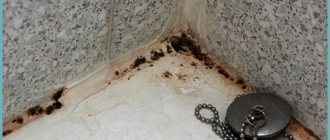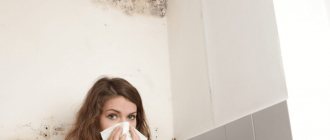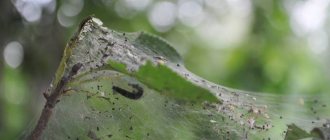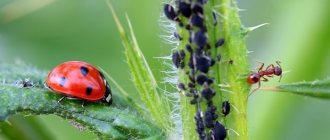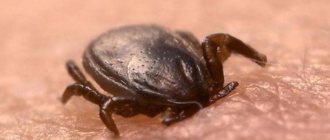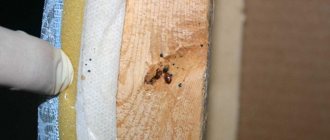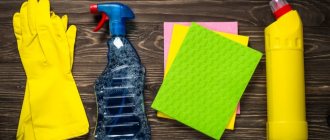Reasons for appearance
Fungi love wood surfaces because the fibers contain nutrients. In addition, wood's ability to absorb moisture creates a favorable environment for the proliferation of microorganisms. Fungi infect wood in two ways. The first method is that fungal spores, which are constantly present in the air, enter the microcracks of the tree and, under suitable conditions, germinate. Factors contributing to the development of wood fungi:
- increased humidity and condensation;
- insufficient ventilation;
- temperature changes;
- prolonged interaction with the soil;
- freezing of wood;
- groundwater.
The second method of infection is the transfer of spores in contact with rotten timber. For this reason, it is not recommended to store timber next to spoiled wood. Fungi reproduce by spores that are easily spread by wind, animals, birds, insects, and remain on clothes and shoes. Infection of timber with fungi can occur during storage and transportation. Mold affects all types of wood used in construction, and infection occurs at any time of the year.
The ideal temperature for fungi is +15-20 degrees, humidity more than 70%. To get rid of fungus, wood moisture content should not exceed 20%.
Types of mold
Molds are a group of organisms of the fungal kingdom that form branching hyphae without pronounced fruiting bodies. Mold is not a scientific name; in colloquial speech it is the name given to colonies of fungi. Currently, about 100 thousand species of fungi have been described, most of which are microscopic molds.
There are many ways to classify molds - by morphology, habitat, pathogenicity for humans. In everyday life, it is common to divide fungi by color:
- black fungus - has a large number of strains, multiplies quickly, is dangerous because it can not only destroy wood, but also develop in the human body;
- white fungus - affects food, plants, wooden surfaces, is less dangerous for humans, but can cause allergies;
- blue mold - often affects pine, leads to rot and gives the wood a bluish-gray tint.
In addition to fungi, actinomycetes are dangerous for wood - bacteria similar to fungi and capable of forming hyphae. They soften the rock, just like mold fungi develop with high humidity and the absence of special treatment.
Traditional methods of fighting fungus
Listed below are several effective means of combating wood rot and mold:
- Silicate glue. The substance is diluted with water to the stage of viscous fluidity. Then the problem areas of the board or product are processed.
- Potassium dichromate. Equal amounts of five percent solutions of potassium bichromate and sulfuric acid are mixed. It is necessary to treat not only wooden surfaces, but also the nearby soil to a depth of half a meter.
- A mixture of vinegar and soda. Areas affected by mold are sprinkled with baking soda and watered with vinegar.
- Copper sulfate. 100 grams of vitriol are added to a 10-liter container of water. The solution is applied to wooden surfaces.
- Hot resin. Used for treating external surfaces.
- Salt with boric acid. A kilogram of table salt and 50 grams of boric acid are poured into a container with 5 liters of boiling water. The surface is processed several times with 2-3 hour breaks.
Note! Traditional methods are effective in the initial stages of decay. If large areas are affected, chemical treatment with factory-made products cannot be avoided.
Modern technologies can significantly improve the performance characteristics of wood. The material will become more durable and less susceptible to the destructive effects of moisture and harmful microorganisms.
Processing methods
Mold and mildew quickly darken and destroy wooden structures. Having seen the first signs of infection (discoloration), you should immediately begin treatment with disinfectant compounds. At the initial stage of development of pathogenic microorganisms, the spots are barely noticeable, but if left untreated, they quickly increase in size. It is important to remember that superficial removal of mold from wood will not achieve the desired effect - the spores grow at least 3-5 mm deep. Stages of mold removal:
- Infected areas are cleaned. The easiest way is to remove rot from the surface with a spatula, and if necessary, clean the inner layers with cutting tools (knife, chisel). You can also use a sander. The scale of impact is determined by the depth of fungal penetration. Sometimes it is enough to remove a thin layer.
- The removed wood is destroyed. Incineration is preferable.
- The cleaned wood is thoroughly washed with a solution of laundry soap.
- Dry and treat with an antiseptic.
For treatment, folk remedies and special anti-fungal compounds are used.
Folk remedies
Traditional methods of destroying mold fungi do not require significant financial costs, but have only a short-term effect. Popular methods include:
- treatment with heated resin;
- applying diluted silicate glue;
- to treat boards, 100 grams of copper sulfate are diluted in 10 liters of liquid;
- the use of Whiteness, a chlorine-containing agent for bleaching and disinfection. When fighting fungi, Whiteness is used in high concentration, diluted with water in proportions 1:1;
- treatment with hydrogen peroxide or ammonia;
- use of boron solution;
- use of acetic acid.
Folk remedies can be hazardous to health and are less effective than special formulations for antifungal treatment. It is acceptable to use for preventive purposes; with significant mold damage, complete destruction of pathogens is rarely achieved.
Special compositions against fungi
Antifungal compounds for wood contain fungicides - chemicals that suppress the activity of fungi, destroying spores and preventing the development of colonies. A properly selected antiseptic against fungus on wood will eliminate hotbeds of mold growth. Available in the form of varnishes, paints, impregnations. The composition is water-soluble, water-repellent, oil-based, solvent-based and combined.
Based on the level of absorption, they are divided into glazing (do not change the color and texture of the wood) and covering (affect the texture of the material).
Based on the period of action, they are divided into short-term protection and long-term prevention.
Well-proven products for treating wood against mold and mildew include products from the following companies: Tikkurila, Pinotex, Belinka, Neomid, Senezh. The compositions are safe, have certificates of conformity, and are recommended for interior and exterior work. Apply following the instructions and paying attention to the required temperature and dosage.
Traditional methods
People have long come up with various options for protective impregnation of surfaces; the resulting result, its quality and durability will depend on the type of substance and method chosen.
People have long invented various options for protective impregnation of surfaces.
Smiling
The point is the impregnating effect of the resin; it can be replaced with drying oil. The product closes the pores well, thereby cutting off the possibility of moisture getting inside. Growing trees are protected by nature from the appearance of mold and mildew; it is the natural resin that acts as a barrier; depending on the species, the sap of the tree serves as a barrier.
The product closes the pores well, thereby cutting off the possibility of moisture getting inside.
We recommend: Choosing a sandblasting gun
Burning
If you are going to work with coniferous species, then you can use this method. The surface is burned until the surface darkens. After sanding, it is possible to additionally coat the material with varnish or drying oil to enhance the effect. Firing promotes baking of the resin, which ultimately blocks the access to moisture.
Firing promotes baking of the resin, which ultimately blocks the access to moisture.
Surface coating with hot bitumen
Bitumen agents can help get rid of fungal attack; the process itself is identical to the waterproofing method when working with walls and foundations. Due to the danger and complexity of the treatment, this technique is unpopular. Bituminous substances can only be used on the outside of structures.
Bitumen products can help get rid of fungal exposure.
A mixture of vegetable oil and propolis
A similar anti-mold for wood is prepared in an oil to propolis ratio of 3:1. The tool to apply the composition is a brush. As a result, you get a matte, stable layer that is transparent; therefore, it will not be able to cover black or blue stains from fungus. It should be noted that the product increases the fire hazard properties of the material.
The product increases the fire hazard properties of the material.
Application of silicate glue
Silicate-based glue is diluted with water to create a paint-like consistency. The treatment is carried out with a brush or roller; a two-layer coating is required. The result will not protect the surface for a long time, nor will it help against all types of fungus.
Silicate-based glue is diluted with water to create a paint-like consistency.
Soda and vinegar
These affordable means help get rid of existing mold formations and cure the material. First, the surface is covered with soda, then 9 percent vinegar is sprinkled onto it. Because of the resulting reaction, harmful fungi die, and those that were deep in the structure of the tree are also affected. Such exposure is usually enough to ensure that you never see mold on these products again. If the question is asked, how to get rid of fungus in the underground of a wooden house, then the remedy is suitable.
These affordable means help get rid of existing mold formations and cure the material.
Slaked lime
An effective and simple product that can be found on sale ready-made, or you can prepare the product yourself.
An effective and simple product that can be found on sale in a ready-made version.
Treating wood with copper sulfate solution
Copper sulfate is diluted with water, the ratio will be created at the rate of 100 grams of copper sulfate per 10 liters of water. The product is reliable and copes with the task if applied in two layers. But the surface will have a greenish-blue tint; therefore, most often the wooden base is painted afterward.
The product is reliable and copes with the task if applied in two layers.
We recommend: Copper corrosion: causes of rusting and methods of protection
A mixture of clay and salt
Take clay/water/salt and mix it together in a ratio of 75/20/5. The solution is effective, but is applicable for interior work, or if the facing material will be installed in the future. The product forms a crust that prevents the colonization of wood by insects, etc.
The product forms a crust that prevents insects from colonizing the wood.
Boric acid
To prepare the substance, you need 50 grams of boric acid, a kilogram of salt and hot water. You can apply the prepared solution with a brush or spray.
These recipes are the only possible option when it is necessary to treat the surfaces of baths and saunas, where the use of chemicals is dangerous. It is impossible to use only the tarring method in these structures.
You can apply the prepared solution with a brush or spray.
How to choose the right tool and method
The choice of protective agent is determined by the conditions of subsequent operation. The main difference between antiseptics is their composition, which may differ in the amount of toxic substances, the intensity of the odor, and the speed of drying.
When choosing an antiseptic, it is important to pay attention to the validity period stated by the manufacturer after treatment. As a rule, the effect of antiseptic agents is 3-5 years. Another important characteristic is the required number of layers during processing and the composition consumption per 1 sq.m. In addition, you should find out whether the product is used for internal or external treatment.
If you have allergies, you should pay attention to the special symbol indicating that the product is hypoallergenic. In dry living rooms, you can limit yourself to varnishes and paints; odorless compositions are preferable. In steam baths and saunas, wood is treated with heat-resistant compounds.
To remove blue and gray fungal stains from the surface of wood, as well as restore the natural color, treatment is carried out with special bleaching compounds.
When large spaces are infected with dangerous strains, it is advisable to call specialists to remove mold. Specialized companies will select an effective composition for killing fungi and carry out the treatment using special equipment.
The main brands of solutions on the market and their features
Choosing a high-quality antiseptic for wood against fungus is very important, since the quality of protection and durability of the coating largely depends on this. It is impossible to determine the characteristics of a particular composition by color, smell or consistency, so we will look at the products of several manufacturers that have proven themselves in the market; these are the ones you need to focus on:
| Biosept | One of the most famous and popular options, and for good reason - this antifungal product for wood is made on the basis of new generation biocides, which makes the composition safe for the environment, very durable and weather-resistant. In addition, the treated surface can be painted with any paint, which is also important. |
| Aquatex | This composition is ideal for processing various carpentry products - from furniture to doors and windows, as well as other planed surfaces. Its main advantage is its low price; one can also note its good absorption even into hard wood. |
| Pinotex | Another well-known brand that produces a wide range of protective products: these can be colorless solutions, as well as matte and glossy compositions of various shades, as well as paints that completely cover the structure of the wood. The protective layer is very durable; the shelf life can range from 5 to 30 years, depending on operating conditions. |
| Biox | The main advantage of this group of products is the highlighting of the wood structure, which is very much appreciated in cases where it is necessary to present products in the most advantageous color. The compositions can be either transparent or with different shades. |
| Elkon | This manufacturer produces several lines of impregnating agents: for freshly cut wood, for the ends of structures, for baths and saunas, and so on. This allows you to choose the best option for any features of the object. |
| Tikkurila | This Finnish manufacturer is well known for the good quality of paints and varnishes; the impregnations are not inferior in quality and are available in different versions for different types of surfaces. |
Important! This is not a complete list of possible options; in fact, there are many more. We have touched only on those that are most often found on store shelves and enjoy deserved popularity among customers.
The glazing antiseptic EcoWood from Tikkurila is popular among professionals
We recommend: Unique methods of aging lining with your own hands
Processing Features
When treating wood against fungus and mold, the following main points are taken into account:
- the antiseptic is applied to a dry, clean surface, after removing the mold from the infected area;
- cover with the second layer after the first has dried;
- use a brush, sponge, roller or hydraulic remote control;
- protect your hands with rubber gloves, your face with a respirator.
After using modern antiseptics and eliminating factors favorable to the development of fungi, in most cases the infection does not recur. Often, fungicides destroy all pathogenic microorganisms present on the surface. The composition of universal products allows you to protect wood not only from fungi, but also from UV rays and insect pests.
Specialty Chemicals
Homemade preparations should not be used if black mold appears on the boards. When deciding how to get rid of dangerous strains, it is better to call specialists or use ready-made products, such as brands, for processing:
- Minwax is a polyurethane product that prevents pathogens from entering wood. Used after antiseptic treatment for additional protection.
- Tikkurila - a paint manufacturer offers liquids for removing microorganisms from wood. One of them is the hypochlorite product Homeenpoisto. The product is diluted with water in a ratio of 1:3 and applied to the affected surface with a brush or spray.
- Belinka is a water-based antifungal agent. For processing 5-10 sq. m of the affected surface requires 1 liter of the substance. Consumption depends on the amount of mold.
- Senezh is a brand of affordable but effective impregnation that removes mycelium and spores of mold fungi, bacteria and insects. The brand covers decorative and colorless products. The former, in addition to antiseptic properties, change the color of the wood, giving the surface the appearance of a more expensive species. Penetrating deep into the material, the antiseptic creates a protective layer that is resistant to moisture and weathering.
The products contain substances that kill mold spores and prevent the development of new colonies. Before applying them, remove the top layer with a grinding machine, removing as much mycelium as possible.
Prevention methods
If the cause of fungal development is not eliminated, the situation may recur after treatment. To protect wood from infection, take the following actions:
- in case of dampness in basements and attics, check the condition of the foundation and roof, improve waterproofing;
- fungi do not tolerate sunlight, it is important to ensure the penetration of UV rays;
- improve air circulation in the room, use fans if necessary;
- the room in which mold forms is dried, air heaters can be used;
- avoid temperature changes.
To prevent the development of mold, a wooden house must be heated in winter. It is important to monitor the condition of the basement and cellar, since these rooms are most susceptible to infection. In apartment buildings, mold can grow in bathrooms and wood paneling.
Once every 3-5 years, it is recommended to re-treat the wood with mold and mildew agents. Even with effective antiseptic compounds, it is easier to prevent the development of fungus than to completely eliminate it.
When building a wooden house, it is important to immediately cut through the openings for air circulation and to prevent dampness.
How to remove mold from a wooden surface?
Questions about how and with what to deal with such a problem do not have an exact and unambiguous answer.
The fungus itself (what a person sees with the naked eye: blackened areas, whitish weightless fluff) is removed with brushes, chemicals, and regular washing. But such measures do not completely remove all disputes.
To completely remove spores, you must adhere to the following rules:
- Assess the extent and area of damage. If this is some place hidden from view (for example, a corner behind a closet), then you need to carefully inspect everything around (the closet, the things in it): it is possible that mold has grown somewhere nearby.
- If the affected area is large (for example, in a room the mold has grown over half a wall, or a couple of square meters in a corner), then at least the space around the infected area needs to be cleared. Move furniture and appliances, remove shelves or any decorative items from the walls, fold up the carpet, and so on. It is recommended to cover what cannot be removed and what is located at a distance (but in the same room) with polyethylene. Otherwise, the cleaning process may deposit spores on these surfaces.
- Put on some old unnecessary clothes, rubber gloves, and a bandage over your face. If there is a lot of mold, then you can use glasses and cover your hair with some old hat or hood.
- Using a metal brush (or a hard sponge), the affected surface is cleaned. Together with a sponge, you can use special chemicals or traditional cleaning methods. This must be done very carefully, until you clean the surface to bare wood. If we are talking about living rooms, then all surface finishes are removed from wooden surfaces.
- When the surface deposit is cleaned off and more or less clean wood appears underneath, you can take the sandpaper and continue working with it.
- The area around the main site of the lesion is cleared, at least 30-50 cm around, in all directions. This is necessary because disputes can develop there too, but it’s just not noticeable yet.
- All cleaned debris is removed.
- Treatment is carried out with a special agent, and the product is left to dry.
- After complete drying, the surface is carefully inspected again.
- If there are no remaining affected areas, then the surface is covered with varnish/paint/impregnation.
Afterwards, the maximum possible air circulation in this room is ensured: supply and exhaust units are turned on (if any), windows and doors are opened.
Wooden panels before and after mold treatment
Please note : this should be done only after the surface has been completely cleaned and after you have completely removed all the cleaned debris. Otherwise, mold spores can only spread throughout the room and beyond.
What products are suitable for processing?
Chemical special products will help you get rid of mold better: they are much more effective than traditional ones, especially when it comes to treating a large area or mold that appeared a long time ago.
You can destroy plaque on boards using the following means:
- "Dali": used for concrete, wood products, tiles and painted surfaces;
- “Stop-Mold”: a concentrated composition is used to treat basements, attics, greenhouses and terraces;
- “Alpa”: this drug should be used only if it is necessary to remove mold spores as part of interior work;
- “Biotol-spray”: this drug is used to remove fungi from facades, attics and cellars.
The listed remedies do not guarantee a solution to the problem. They do an excellent job of removing mold at once, but it can return if the conditions are not corrected (the causes of its appearance are not eliminated). Therefore, immediately after processing boards or other surfaces, you must adhere to the recommendations given above.
No means (neither chemical nor folk) can completely protect wooden products from mold infection if measures for its prevention are not followed.
